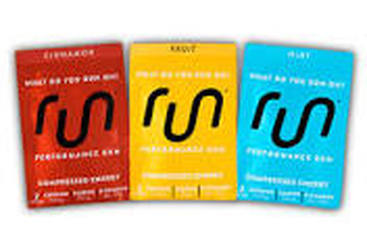Why, When, How?
Caffeine for performance: Make a good thing even better!
by Joe Maloy (Olympic Triathlete, Rio 2016)
Many of us already enjoy coffee, tea, soda, and other caffeinated beverages. Research on endurance athletes shows that caffeine intake can be strategically timed to deliver performance benefits—both making a hard effort feel easier and helping to keep you focused during a race.
Here we’re going to discuss timing that caffeine intake to achieve the maximum performance benefit. It’s important to note there is no “one-size-fits-all” approach with caffeine supplementation. Try it out and see what works best for you!
General guidelines to know when deciding your strategy:
Adaptation
Decrease intake days before event to make caffeine feel more effective. When we grow accustomed to drinking coffee every day, our bodies “get used” to the caffeine high. Decreasing consumption in the 2-3 days before a week can make the caffeine dose more effective on race day.
Dosage
Amount: 1-3 mg/kg of body weight.
-There’s no added benefit to having more than 3mg/kg. (1Kg ~ 2.2lbs)
Timing
Time for stomach to digest ~ 15-45min, Peak stimulatory effects of caffeine ~ 30-75 min post-absorption.
Obviously this is a large range, so it’s important to experiment during training/workouts to see how fast you metabolize the caffeine/when you notice any performance benefits.
Method
Coffee, Tea, Soda, Caffeine Pills, Caffeinated Gum
Caffeine amounts in brewed coffee and tea vary greatly depending on the beans/tea leaves and method of brewing. With coffee in particular, the method of brewing also impacts the drink’s acidity. Cold brewing and drinking espresso-based coffee drinks are good ways to drink coffee with lower acidity. There are also coffee beans that have naturally lower acidity, and this is normally noted on the bags. The caffeine dose in soda is controlled, but the acidity and carbonation can cause an upset stomach.
Cold brewing coffee is a great way to drink highly caffeinated coffee with low acidity. Espresso-based drinks generally have lower caffeine but are also lower in acid. (Brewing the beans with hot water causes the drink to become more acidic. Espresso is lower in acid because the hot water spends less time in contact with the beans.) Brewing with “The Toddy” home cold brew method and “The Aeropress” are two suggested methods to make cold brew/espresso at home.
The benefit of taking caffeinated pills or chewing gum (like Run Gum) is that it is a consistent, controlled dose. You also don’t have to worry about acidity. With caffeinated pills, consideration should be given to the time it takes your stomach to digest the pill and release the caffeine to your system. Gum, on the other hand, is a more direct delivery method. It’s broken down in your mouth and absorbed through saliva, which is a much faster delivery method and removes the “digestion” variable. “Run Gum” is the brand I liked to use, and is available for purchase online or in select specialty running stores.
The key thing, as with anything regarding sports performance, is to find what works for you. Find a routine that works for you, and enjoy the extra boost!
- JM
Here we’re going to discuss timing that caffeine intake to achieve the maximum performance benefit. It’s important to note there is no “one-size-fits-all” approach with caffeine supplementation. Try it out and see what works best for you!
General guidelines to know when deciding your strategy:
Adaptation
Decrease intake days before event to make caffeine feel more effective. When we grow accustomed to drinking coffee every day, our bodies “get used” to the caffeine high. Decreasing consumption in the 2-3 days before a week can make the caffeine dose more effective on race day.
Dosage
Amount: 1-3 mg/kg of body weight.
-There’s no added benefit to having more than 3mg/kg. (1Kg ~ 2.2lbs)
Timing
Time for stomach to digest ~ 15-45min, Peak stimulatory effects of caffeine ~ 30-75 min post-absorption.
Obviously this is a large range, so it’s important to experiment during training/workouts to see how fast you metabolize the caffeine/when you notice any performance benefits.
Method
Coffee, Tea, Soda, Caffeine Pills, Caffeinated Gum
Caffeine amounts in brewed coffee and tea vary greatly depending on the beans/tea leaves and method of brewing. With coffee in particular, the method of brewing also impacts the drink’s acidity. Cold brewing and drinking espresso-based coffee drinks are good ways to drink coffee with lower acidity. There are also coffee beans that have naturally lower acidity, and this is normally noted on the bags. The caffeine dose in soda is controlled, but the acidity and carbonation can cause an upset stomach.
Cold brewing coffee is a great way to drink highly caffeinated coffee with low acidity. Espresso-based drinks generally have lower caffeine but are also lower in acid. (Brewing the beans with hot water causes the drink to become more acidic. Espresso is lower in acid because the hot water spends less time in contact with the beans.) Brewing with “The Toddy” home cold brew method and “The Aeropress” are two suggested methods to make cold brew/espresso at home.
The benefit of taking caffeinated pills or chewing gum (like Run Gum) is that it is a consistent, controlled dose. You also don’t have to worry about acidity. With caffeinated pills, consideration should be given to the time it takes your stomach to digest the pill and release the caffeine to your system. Gum, on the other hand, is a more direct delivery method. It’s broken down in your mouth and absorbed through saliva, which is a much faster delivery method and removes the “digestion” variable. “Run Gum” is the brand I liked to use, and is available for purchase online or in select specialty running stores.
The key thing, as with anything regarding sports performance, is to find what works for you. Find a routine that works for you, and enjoy the extra boost!
- JM


